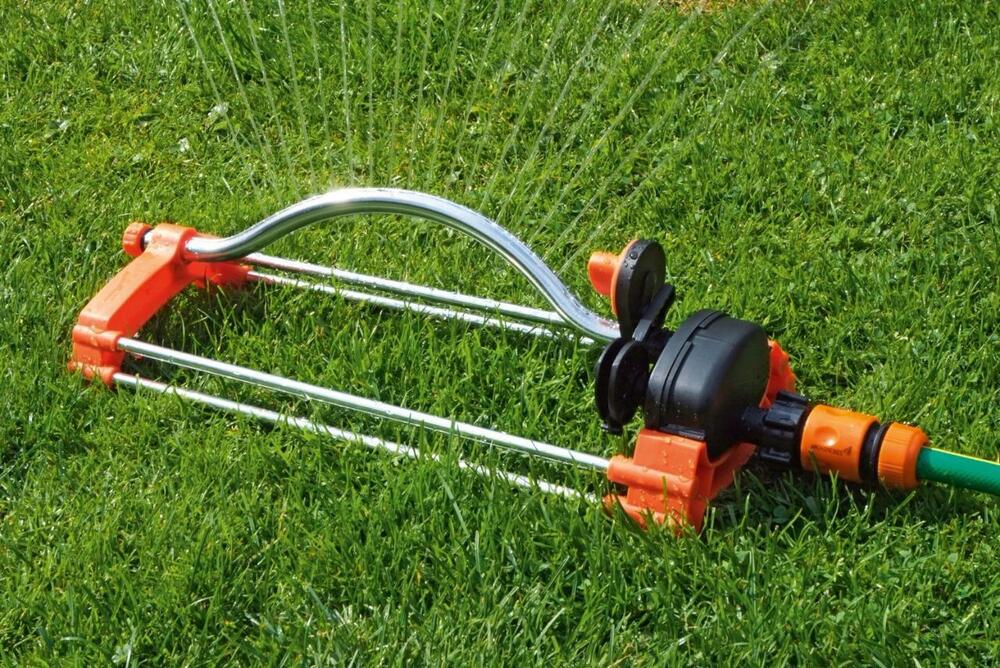Lawn Recovery
Read MorePosted on: Sep 08, 2022Luis M Pérez
Summer heat waves can sometimes leave your lawn damaged. Often during drought, counties put up water rationing, making lawn recovery very important. Maintaining your yard before summer with the correct fertilizer level and good water management practices will help reduce damage and help you with lawn recovery.
Once seasonal rains resume, many turf areas will green up naturally. Areas that do not recover may require spot seeding, plugging, or sodding. In severe cases, complete lawn renovation may be necessary, but lawns are resilient, so this is usually not the case.
Watering
In a heatwave, it is especially important to maintain consistent watering, and when watering your grass, be sure to monitor for even distribution. You will want to ensure that all areas, especially those exposed to lots of sunlight and near pavement or concrete, are watered well. This may require adjusting/rotating sprinkler heads and cleaning the sprinkler nozzles of any dirt and debris. Also, please pay close attention to the flat, hard surfaces in your yard, as they can cause runoff. If you see a lot of runoffs, you may need to aerate those areas, so the water goes down to the root system. Finally, look out for pooling or puddling on your lawn, as you do not want to “drown” your grass by applying too much water too quickly to absorb

Mowing
We suggest when grass cutting to leave clippings on the lawn. This will provide a protective barrier and help the grass retain moisture in the summer months. In addition, if your yard develops a fungus, we recommend that you pick up the clipping for 2 to 3 mowing cycles, which will give your lawn time to recover from the disease.
We encourage you to maintain a sharp lawnmower blade, as a dull mower blade will rip and tear at the grass, weakening it and making it susceptible to insects and diseases.
When cutting grass, it is also important to not cut off more than a third of the grass blade in one cut. As you may not measure your grass with a ruler, a “rule of thumb” is to never go more than a week in between cuts. If you cut off more than a third of the grass blade at one time, you will likely cut off the grass’s nutrient supply, resulting in a dry, patchy yard.
Finally, we suggest you ensure your grass is healthy before cutting it, as you do not want to spread diseases throughout your yard.
Fertilization
Proper fertilization after a drought can help turf recover quicker after a drought. When your lawn goes dormant during a drought, it shuts itself down, but when drought conditions dissipate, the lawn will need a boost to speed up its recovery. A good fertilizer application will provide this needed boost.
Aeration
Liquid aeration is a natural solution that saturates the soil, mixes deep into the ground, and expands. These tiny pockets of air allow water and nutrients to freely reach the grass’s root system without disrupting the soil’s top layer. By limiting that disruption, we also limit space on the surface for new weeds to grow. Aerating after a drought helps the roots of your lawn grow thicker and deeper in the soil, aiding your lawn’s recovery.
Spot Seeding
Although lawns are resilient, and the vast majority of your lawn will likely recover on its own, it is helpful to seed your lawn after a drought. A general overseeding of the entire lawn is great to add new grass seed to the turf and help thicken up the lawn. Smaller bare or dead areas can be spot seeded by hand. Loosen soil before seeding or add top soil first to provide good soil-seed contact.
Renovation
If a general overseeding is not going to be enough to help your lawn recover, you could also consider a renovation. If you cut, water, fertilize and seed properly, Renovation is an expensive process that can usually be avoided. However, if your lawn is neglected for too long, you will need to replace the old dead grass with new sod.
Question?
For more information on Lawn Recovery. Please get in touch with our Lawn Care Expert, Luis Perez, via email at luisp@doctorgreen.com.

